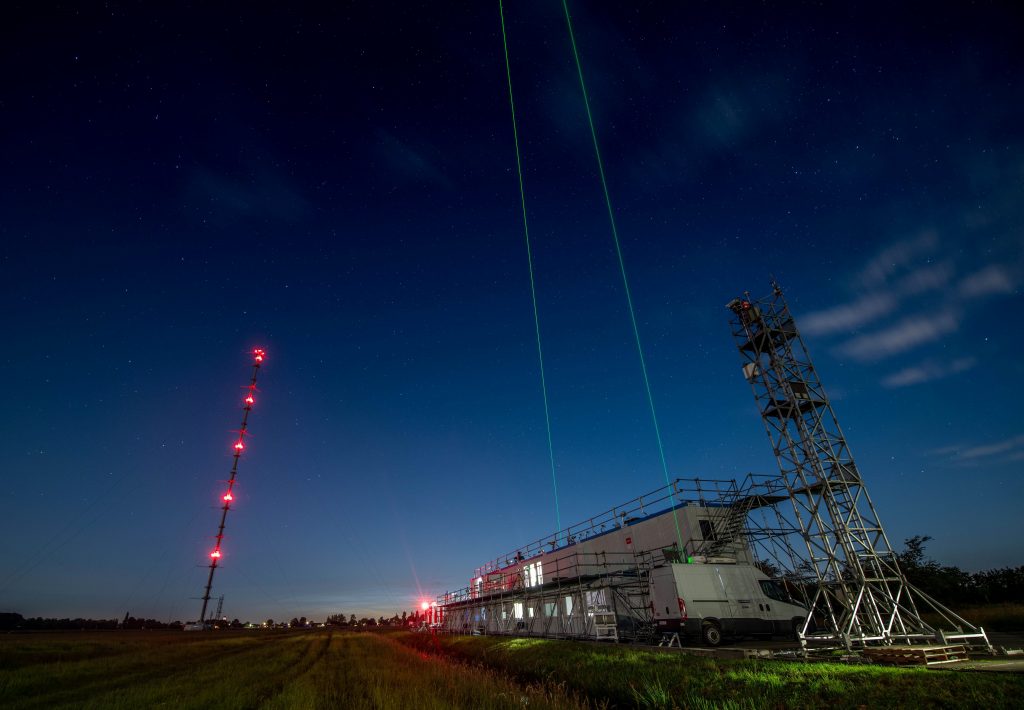Advancing Our Understanding of Air Pollution through CINDI-3
From 21 May until 25 June 2024, the third Cabauw INtercomparison of UV-Vis DOAS Instruments (CINDI-3) campaign took place in Cabauw, the Netherlands. Building on the success of CINDI-2 in 2016, this event was a significant milestone in atmospheric science. During the effort, more than 100 people participated from 16 countries worldwide, operating 44 instruments. This international measurement campaign, which gathered many ACTRIS users measuring air pollution by remote sensing techniques, is the largest of its kind in the world.
The Growing Importance of Atmospheric Knowledge
As global concerns about air quality and climate change intensify, the need for in-depth understanding of atmospheric pollutants is becoming increasingly urgent. Knowledge gained from atmospheric studies aids in predicting and mitigating the effects of air pollution and climate change on both health and the environment. This awareness highlights the importance of international collaborations like CINDI-3, where resources and expertise are pooled to tackle global challenges.
The world is progressively collaborating to address atmospheric issues, and this trend is set to grow. The CINDI-3 campaign demonstrates this collaborative spirit, uniting scientists and advanced technology from across the globe in the Netherlands.
Why CINDI-3 Matters
The CINDI campaigns are pivotal for enhancing our understanding of air pollution. They provide a unique platform for the intercomparison of instruments measuring nitrogen dioxide, ozone, aerosols and several other reactive gases. The data collected is vital for validating satellite measurements, thereby improving the accuracy and reliability of these readings under diverse atmospheric conditions. These campaigns also promote knowledge exchange among international researchers, contributing to the global effort to monitor and mitigate air pollution.
CINDI-3 stands out due to its comprehensive approach in measuring multiple atmospheric components. While primarily focusing on NO2 and ozone, it also targets secondary pollutants such as formaldehyde (HCHO), glyoxal (CHOCHO), and aerosols. The campaign not only measures these pollutants but also collects detailed vertical profiles and studies their distribution in both urban and rural settings. This holistic approach offers a complete view of atmospheric conditions and pollutant behaviour.

Cabauw and the Ruisdael Observatory
Cabauw, the central facility in Ruisdael Observatory, is an ideal location for such campaigns due to its unique blend of rural and urban influences. This setting is perfect for studying atmospheric pollutants. The Ruisdael Observatory, a key partner in CINDI-3, plays a crucial role by providing advanced research infrastructure that supports detailed measurements and analyses. This ensures high-quality data collection and interpretation.
Specifically, KNMI, as host of the Cabauw site for Ruisdael Observatory, offered essential logistical and technical support, including setting up and maintaining advanced measurement instruments. Overall campaign coordination was done in collaboration with the CINDI-3 steering committee, led by BIRA (Royal Belgian Institute for Space Aeronomy), coordinating mobile observation units, and ensuring smooth operation of various monitoring activities.

View of the array of containers on the Cabauw Remote-sensing site used for the intercalibration experiment during CINDI-3. Photo credit: Arnoud Apituley.
CINDI-3: Goals and Activities
The primary goals of CINDI-3 included:
– Intercomparison and Intercalibration: Ensuring consistency and accuracy of NO2 and ozone measurements from different instruments.
– Profile Information: Collecting detailed vertical profiles of atmospheric pollutants.
– Homogeneity Studies: Utilising temporary stations in urban areas like Rotterdam to assess pollutant distribution.
– Mobile Observations: Conducting ground-based and airborne measurements to capture dynamic changes in pollutant levels.
Additionally, CINDI-3 aimed to certify new instruments and provide training on calibration and data quality assurance, further supporting the development of atmospheric science.
Historical Context and Achievements
Looking back, the initial CINDI campaign in 2009 and CINDI-2 in 2016 were crucial in establishing baseline intercomparisons and refining measurement techniques. These campaigns provided valuable insights into the accuracy of NO2 measurements and the behaviour of other pollutants such as ozone (O3), formaldehyde (HCHO), and glyoxal (CHOCHO) under varying atmospheric conditions.
Looking Forward
The outcomes of CINDI-3 will not only validate current measurement techniques but also drive future innovations in atmospheric monitoring. By fostering international cooperation and advancing our understanding of atmospheric pollutants, the CINDI-3 campaign will significantly contribute to global air quality management efforts.
International
This international measurement campaign, which gathered many ACTRIS users, saw more than 100 people from 16 countries operating 44 instruments. To ensure long-term validation of satellite measurements, the European Space Agency (ESA) has set up the Fiducial Reference Measurements (FRM) Programme to develop reference data for satellite validation. CINDI-3 and the FRM4DOAS projects are part of this programme focusing on reference data for air quality and ozone.
Access to the Cabauw Atmospheric Research Station was supported by ACTRIS-NL, the ATMO-ACCESS Trans National Access programme, as well as ESA through the FRM4DOAS project.

Cabauw site overview during the CINDI-3 campaign by night. Photo credit: Arnoud Apituley.




